Five Must-Visit Islands in French Polynesia
A solo traveler delves into the allure of the islands of Tahiti
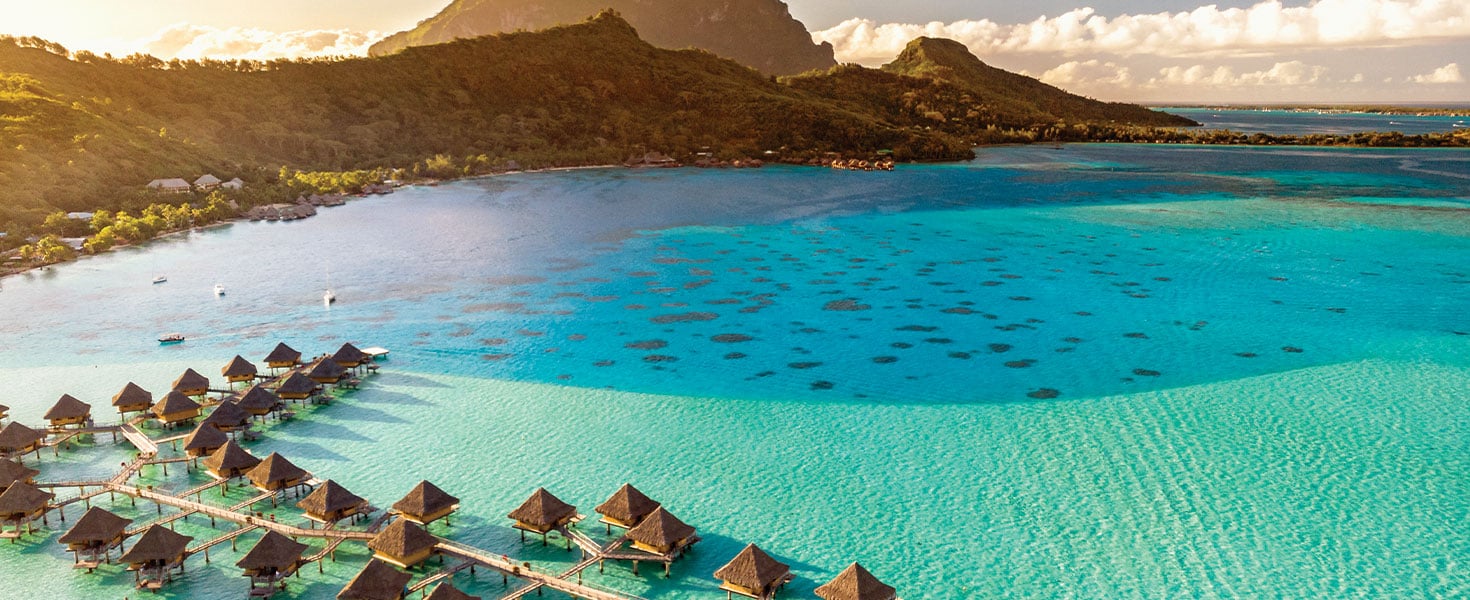
Known worldwide for its extravagant hotels, sumptuous spas and superb scuba diving, French Polynesia, often referred to as The Islands of Tahiti, is the dream destination of newlyweds and retired couples alike, thanks to its unofficial designation as the world’s romance capital. After all, few scenarios say romance quite like secluded above-water bungalows, luxurious breakfasts on oceanfront porches and starlit dinners on a private island.
Indeed, an ex-boyfriend promised to take me to one of these famous bungalows, but that relationship didn’t last. So, instead of waiting for Prince Charming to make my dreams come true, I headed to French Polynesia solo this past winter, and I’m glad I did.
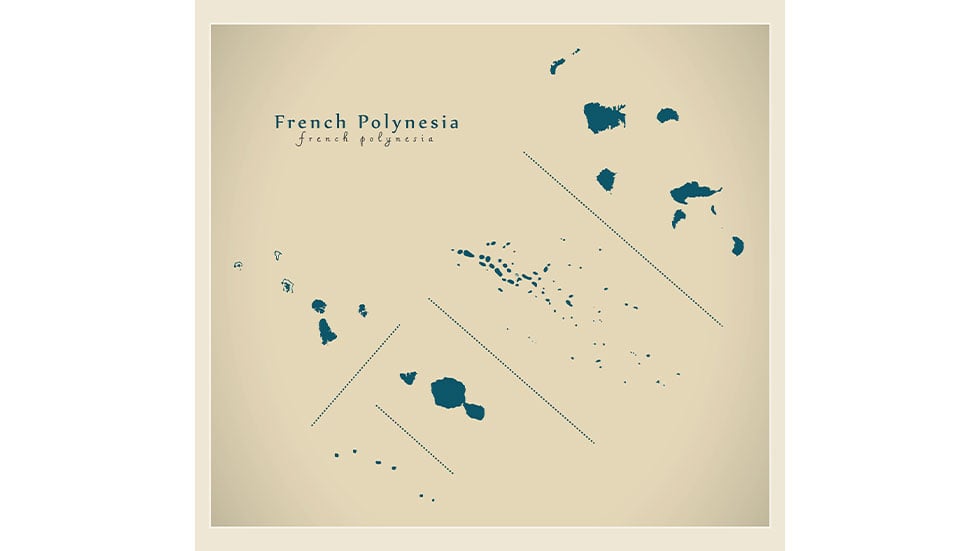 Modern Map of French Polynesia; Photo by Ingo Menhard/stock.adobe.com
Modern Map of French Polynesia; Photo by Ingo Menhard/stock.adobe.com
The more than one thousand Polynesian islands and their waters form an enormous triangle between Hawaii, New Zealand and Easter Island. French Polynesia, comprising five archipelagos with 118 islands, is smack-dab in the middle of this triangle. Tahiti is the largest of those islands, home to the capital and nearly 70 percent of French Polynesia’s 300,000 or so inhabitants.
Migrating Polynesians from Southeastern Asia began settling here around 500 BC. Europeans first arrived in the region in the 18th century, and by 1880, France had established a colony here. Modern-day French Polynesia (including its islands and the waters surrounding them) covers a nautical surface area approximately the size of Western Europe. Considering its massive size, I was happy to have nine days to explore.
THE FRENCH CONNECTION
I visited five islands during my stay, two reachable by ferry, three requiring separate flights. While most islands offer a similar mix of activities—diving and snorkeling with sharks, hiking, ATV tours and spa experiences—each has its own vibe. If you prefer to stay in one or two locations, you can still enjoy a well-rounded Polynesian experience without flying or boating all over.
 Tahiti’s Papeete Harbor; Photo by rouda100/stock.adobe.com
Tahiti’s Papeete Harbor; Photo by rouda100/stock.adobe.com
TAHITI
I started my trip in Tahiti’s waterfront capital, Papeete, where direct flights arrive from Los Angeles, San Francisco and Seattle. To allow time to visit farther-out islands on this trip, I spent just one night in Tahiti, getting in a quick scuba dive to an offshore shipwreck and visiting a local market where I bought tropical fruit, Tahitian vanilla and massage oil.
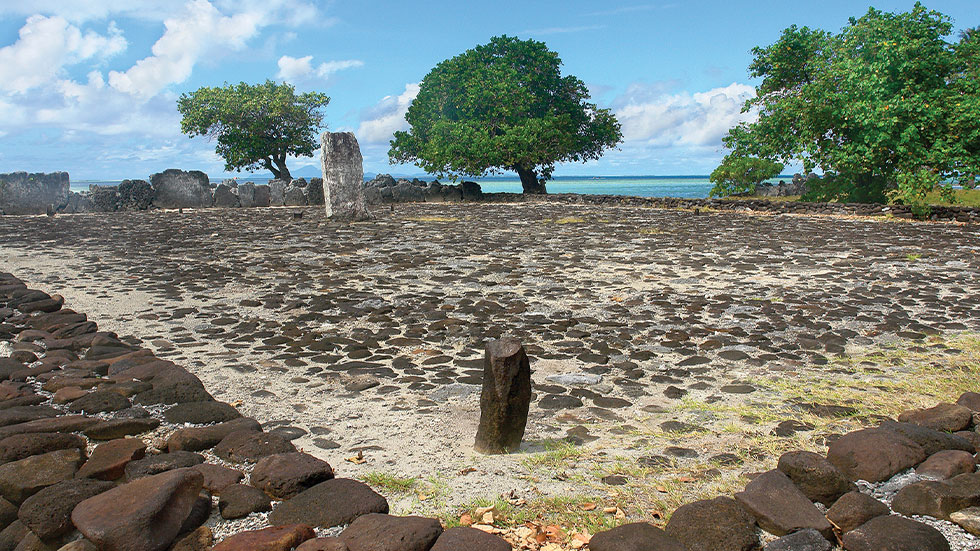 Marae Taputapuatea, UNESCO World Heritage Site; Photo by robnaw/stock.adobe.com
Marae Taputapuatea, UNESCO World Heritage Site; Photo by robnaw/stock.adobe.com
RAIATEA
The next day, I flew to Raiatea, which makes a great home base. It has incredible hiking, diving, snorkeling and archaeological sites. Also, it’s only a boat ride away from Taha’a, where an excellent pearl farm, rum distillery and the epicenter of the Tahitian vanilla industry await.
Though it’s only a 45-minute flight from Tahiti’s sprawling hotels and busy shopping corridor, Raiatea feels worlds away. An easily walkable three-block city center welcomes travelers who can stay in family-owned guesthouses or the island’s largest hotel with nine rooms. The atmosphere is relaxed, unpretentious and congenial.
Raiatea is also home to Marae Taputapuatea, the former religious, spiritual and cultural center of Polynesia, now a UNESCO World Heritage Site, which I toured with my private guide Giovanni. Afterward, he showed me some of the tattoos he has on his arms and chest that are of traditional motifs common across Polynesia, explaining that these elaborate inkings tell the story of how ancestors sailed the seas, navigated by stars and relied on animals they encountered to sustain them. He also twined together a crown of leaves for me, showed me how to weave a basket with banana leaves, and sang while playing the ukulele.
Part of what makes Raiatea so special is its proximity to Taha’a, easily reachable by ferry or private boat charter. Though you could overnight in Taha’a (options range from budget bungalows to luxury resorts), many travelers, like me, base themselves in Raiatea and day-trip to this small island.
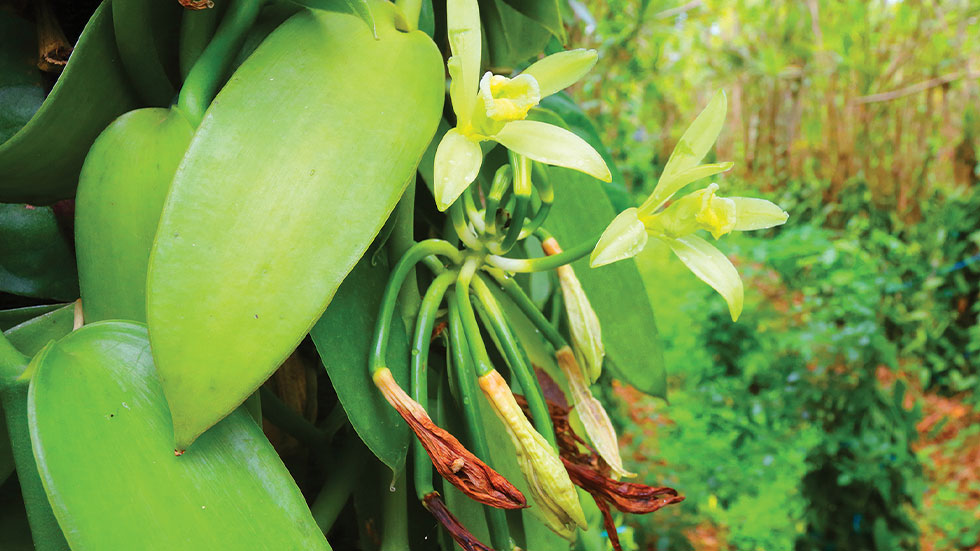 Tahitian vanilla; Photo by kletr/stock.adobe.com
Tahitian vanilla; Photo by kletr/stock.adobe.com
TAHA’A
So-called “Tahitian” vanilla is one of the most sought-after vanillas worldwide, but more than 70 percent of it actually comes from Taha’a, not Tahiti. While I visited well after vanilla harvesting season (which runs March to July), I thoroughly enjoyed touring the farm, seeing pods growing and smelling them dry in the sun. Tahitian vanilla (vanilla tahitensis) is unique in that it is a natural hybrid that requires pollination and curing processes all done by hand, which results in a floral aroma. Six months later, I still enjoy beverages and baked goods prepared with pods I purchased there.
Among the many pearl farms in French Polynesia, Taha’a’s locally owned Iaorana Pearl Farm is considered one of the best because visitors are never pressured to buy. An open-air grafting “studio” provides an up-close look as skilled artisans meticulously insert tiny bits of a mother-of-pearl shell nucleus into a pocket in the oyster, along with a small sliver of DNA from another pearl-producing oyster.
Even if you don’t buy anything from the well-stocked jewelry store, it’s interesting to peruse the various colors, shapes and styles of pearls. Be sure to check out the $4,500 necklace that took 10 years to finish because there simply weren’t enough yellow pearls to complete it. (I learned that, in many cases, the color of a pearl is influenced by the oyster’s lip color!)
My day trip to Taha’a was punctuated by a picnic lunch on a motu (tiny island) and a snorkeling session with black-tip reef sharks, turtles, stingrays and colorful coral reefs. The charter boat that brought me to Taha’a took me to several snorkeling spots to get a feel for the range of animals and plants under the water. Snorkeling conditions are perfect here, and it’s a wonderful way to break up a day of vanilla plantation and pearl farm tours.
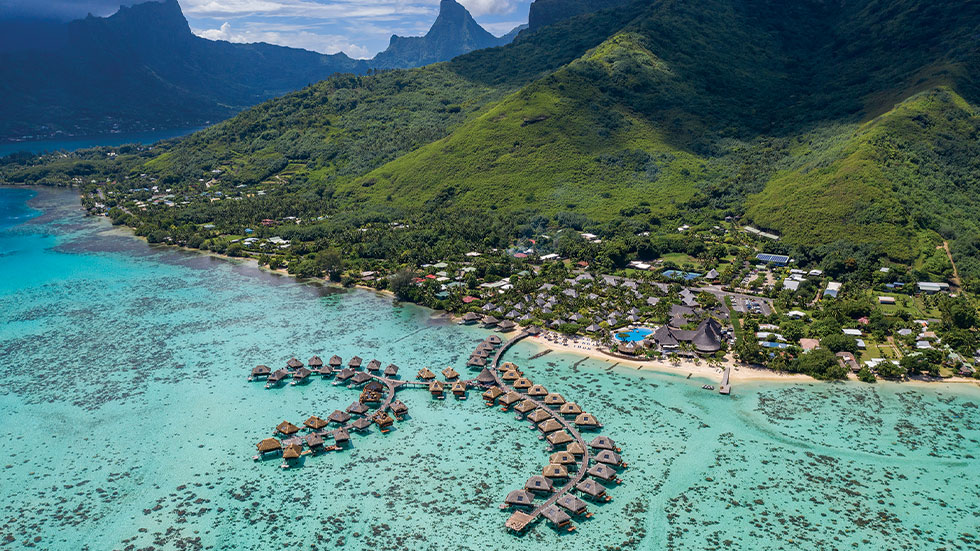 The island of Moorea; Photo courtesy of Holger Leue
The island of Moorea; Photo courtesy of Holger Leue
MOOREA
Moorea, Tahiti’s neighboring island, also has excellent diving and snorkeling, a fascinating science center and some of the most easily accessible hiking in French Polynesia. Because it’s just a 30-minute ferry ride from the capital, you could day-trip from Tahiti. After several days in Raiatea, I flew back to Tahiti and hopped a ferry to Moorea to spend my last few days hiking.
I recommend hiking with a guide who can point out native flora and fauna and navigate trails that are often overgrown, slippery or unmarked. The best views I saw anywhere in French Polynesia were from winding trails to the top of several of Moorea’s mountains with views of endless turquoise waters, boat-dotted bays and surrounding forested mountaintops.
To understand French Polynesia’s geography, geology and biodiversity, head to Moorea’s Te Fare Natura ecomuseum, where displays and immersive experiences convey what diving these waters is like, perfect for ocean and wildlife lovers who aren’t certified scuba divers.
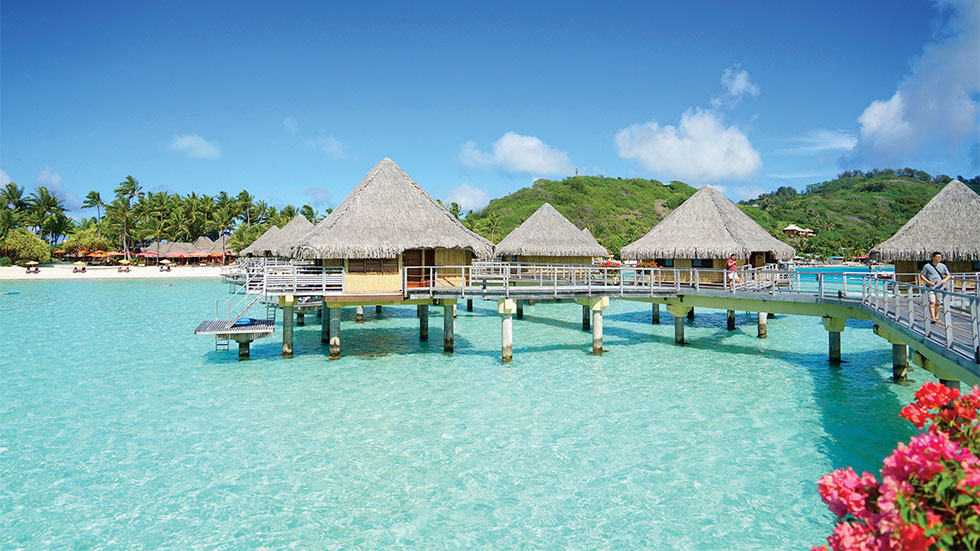 Overwater bungalows beckon visitors to the InterContinental Bora Bora La Moana and other resorts in French Polynesia; Photo courtesy of Lei Tao
Overwater bungalows beckon visitors to the InterContinental Bora Bora La Moana and other resorts in French Polynesia; Photo courtesy of Lei Tao
BORA BORA
Thousands of American troops were stationed in Bora Bora during World War II from 1942 to 1946. (The island served as a strategic refueling base for the US Navy, with no battles taking place here.) When US service members headed home after the war, they spread the word about this idyllic island. And, because the military had built wide roads and a brand-new airport to support their wartime efforts, Bora Bora had the necessary infrastructure in place to welcome newly arriving visitors.
As Bora Bora was the first island in French Polynesia to receive international tourists, it has a well-developed tourism industry offering many of the activities and experiences you’ll find elsewhere in the islands. Nevertheless, many visitors stay close to their resorts, which are so lavish that it’s hard to tear yourself away.
I stayed in an overwater bungalow with a private outdoor deck, a swimming area and an illuminated indoor glass section of flooring for viewing fish. The resort has a spa with private pools, a tea and meditation lounge, and a wide selection of international and traditional Polynesian massages. (Many resorts throughout Polynesia offer overwater bungalows, beach bungalows, garden bungalows/villas and traditional hotel rooms, so you could spend a few days in a more expensive overwater bungalow and then switch to a more affordable room for the rest of your stay.)
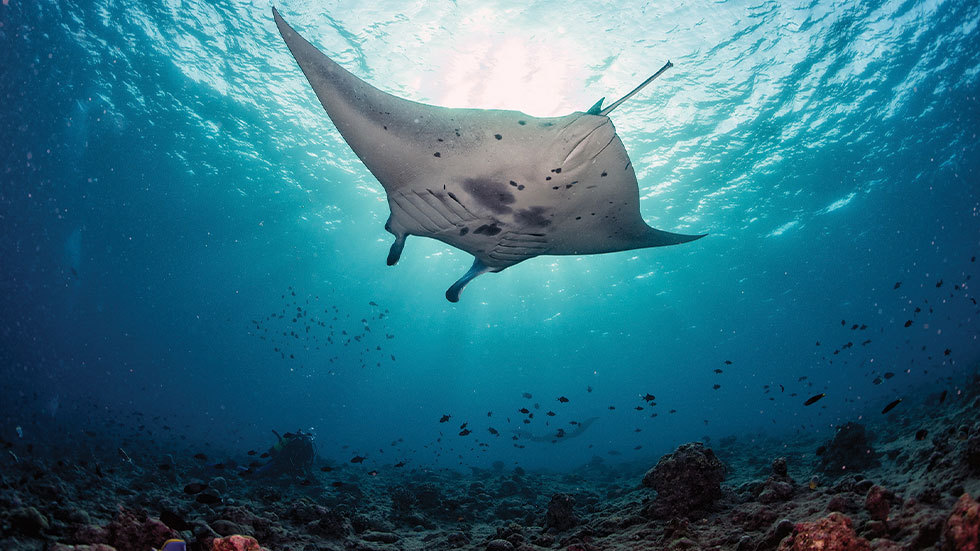 A snorkeling excursion may reward with a sighting of a manta ray; Photo by Andrea Izzotti/ stock.adobe.com
A snorkeling excursion may reward with a sighting of a manta ray; Photo by Andrea Izzotti/ stock.adobe.com
Exceptional scuba diving can be had all over French Polynesia, but of the eight dives I did across four islands, my favorite was in Bora Bora. As I hovered inches above the ocean floor, a manta ray with a 10-foot wingspan glided right past me. The diving here is so good that the five other people on my dive boat were spending their week in Bora Bora getting their PADI diving certification.
Though I didn’t meet my Prince Charming in French Polynesia (I’ll admit that I was hoping to!), I’m glad I didn’t wait for a dream man to take me there. Soaking up the sun, sea and celebration of the islands was the perfect solo escape, though I do hope to return someday with a prince.
